The Uganda Big 5 | Best Time & Affordable Safari Options
The name “African Big 5 Animals” originated in the 1800s by trophy hunters to describe the most difficult and dangerous creatures to hunt on foot. A remarkable percentage of travellers come to Africa on safari to see elephants, buffalo, rhinos, leopards, and lions, and Uganda has a fair share of the big game action (Uganda Big 5).
These include the African elephant, lion, leopard, buffalo, and rhinoceros. So, the word is most commonly associated with African safari guests who use cameras rather than lethal weapons to hunt the big five in current times. Uganda has all of Africa’s big five animals (Uganda Big 5), which may be viewed in all savanna parks.
The catchy phrase is now widely used on advertising safaris. However, in the nineteenth and early twentieth centuries, everyone from European royalty to American presidents wanted to bring home an African hunting trophy—the larger and more dangerous the beast, the more desirable it was. This is how the “Big 5” became famous.
The big five species are still hunted today, particularly in South Africa. Legal game hunting is a lucrative industry for the affluent and privileged. Outside of hunting cliques, public opinion is overwhelmingly negative toward Big Five hunting, and the practice may be on its way out. However, as tourism has increased, witnessing the Big Five has become an “awe-inspiring” goal for any safari-goer.
The title of the Africa Big 5 may sound frightening and threatening, but these beasts may require our assistance to avoid extinction. The International Union for the Conservation of Nature (IUCN) classifies the African lion, leopard, and elephant as vulnerable species.
The western black rhino was declared extinct in 2011, primarily due to hunting for its horns. The last male northern white rhino died in 2018, leaving only two females—making the subspecies effectively extinct. Conservation efforts have managed to keep Uganda’s Northern White Rhino alive in the highly protected Ziwa Rhino Sanctuary.
The Cape buffalo is a small conservation problem, yet it is also the most popular mammal to hunt. The population of Cape buffaloes is diminishing due to hunting, poaching, and habitat destruction.
Rhinos became extinct in Uganda in the 1980s. While southern white rhinos have been reintroduced at the Ziwa Rhino Sanctuary, there are no reserves in Uganda where you can go on a Big Five safari. Uganda’s western region offers two options for Big Four (leopard, lion, buffalo, and elephant) safaris: Queen Elizabeth National Park, the best reserve in the country for wildlife diversity and tree-climbing lions, and Murchison Falls National Park, which has large herds of elephant, giraffe, and buffalo. The other Big Four reserve is located in a remote location in northern Uganda. Kidepo Valley National Park is Uganda’s most rugged wilderness, preserving species unique to the country, such as caracal, cheetah, and aardwolf, with hopes to reintroduce white rhinos.
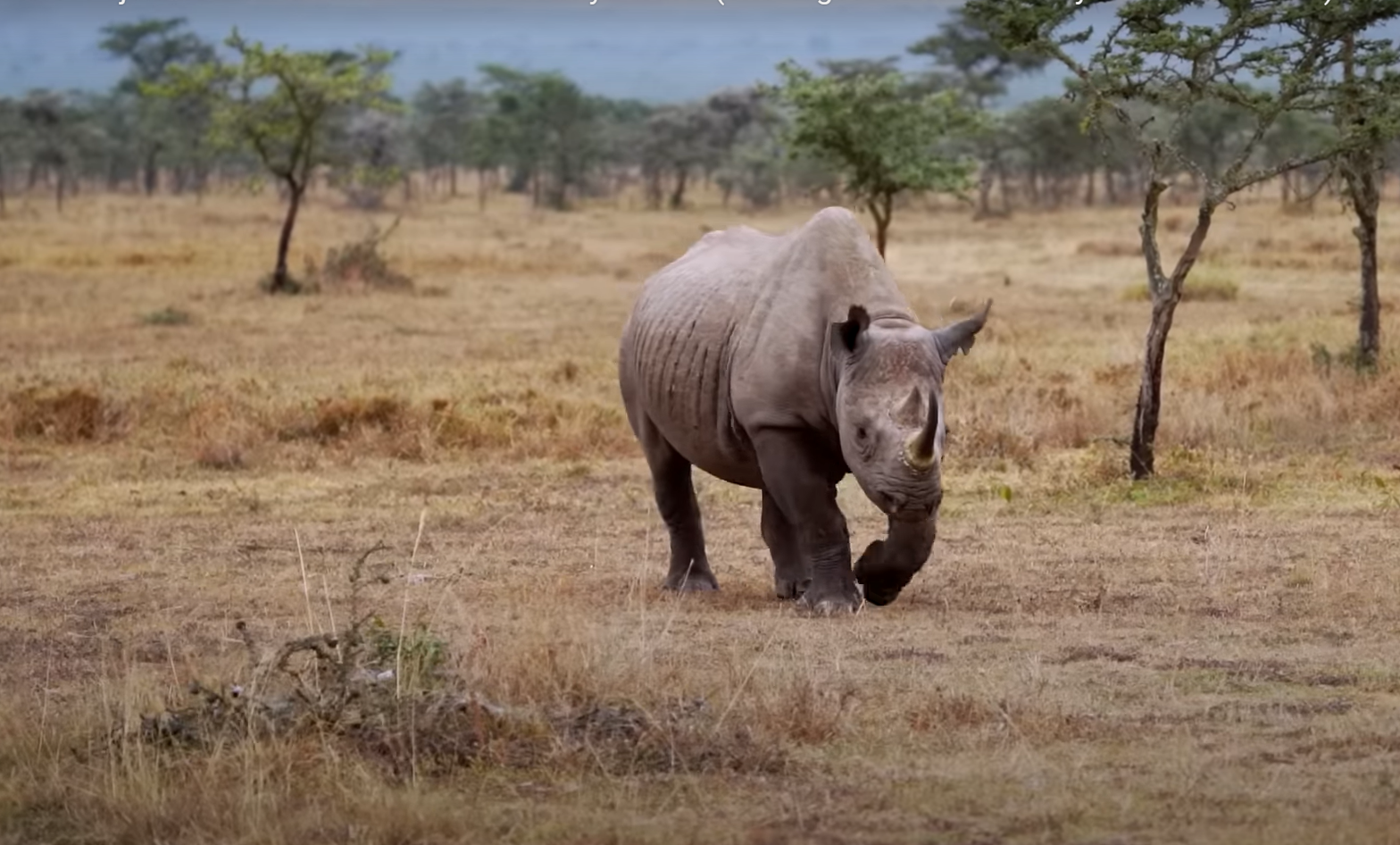
Sabi Sand Game Reserve, which shares an unfenced border with Kruger, offers an exclusive safari experience. With only guests permitted within its boundaries, animals roam freely. Some of Africa’s most opulent lodges await, ensuring a luxurious and unforgettable safari adventure.
The renowned Kruger National Park in South Africa is a must-visit destination for safari enthusiasts, whether novices or seasoned travellers. Kruger promises exceptional wildlife encounters by spanning a vast area comparable to the size of Israel or Belgium.
What are other top destinations where you can track the Big 5?
For optimal chances of spotting the Big 5 on a single safari excursion—and perhaps even within a single game drive or day—consider visiting the following top destinations:
The Ngorongoro Crater in Tanzania boasts a rich ecosystem teeming with approximately 30,000 animals. Its steep walls confine the wildlife within, making for an easily combined safari experience with nearby Serengeti and Tarangire National Parks.
Madikwe Private Game Reserve, once farmland in South Africa, now undergoes meticulous rehabilitation. Hosting all members of the Big 5, this reserve offers luxurious lodging options and effective collaboration between guides. It also pairs conveniently with Sun City, Africa’s largest resort.
What are the Big Five in Uganda?
Uganda’s Rhino
Among the Big Five, the rhino is notably the least abundant and faces the gravest threat due to extensive poaching for its horn.
Rhino Tracking|Uganda Big 5|Ziwa Rhino Sanctuary
Tourists visiting the sanctuary can partake in a guided rhino tracking experience, providing an opportunity to encounter these majestic creatures up close on foot. Uganda was once home to both the Black Rhinoceros and the Northern White Rhinoceros. However, due to factors such as poaching, human conflict, and mismanagement of their natural habitat, both species were wiped out of the country by the 1970s and 1980s. This is a fate shared by many rhinos across Africa.
The Ziwa Rhino Sanctuary, established in 2005, is working hard to reintroduce the southern white rhinoceros to Uganda and build a sustainable population. The sanctuary aims to relocate rhinos back to their original habitat in Uganda’s protected areas. As of January 2010, it was the only place in Uganda to observe rhinos in their natural habitat. Since its inception, the sanctuary has witnessed remarkable success, with the original 13 White Rhinos multiplying to over 30 individuals.
But Uganda’s parks no longer have wild rhinos, and the situation is dire. Thankfully, there is a small non-profit group fighting to restore rhinos to their rightful place in the ecosystem. The Ziwa Rhino Sanctuary is located about 3 hours northwest of Kampala and is home to 15 white rhinos. These rhinos are essentially wild, living in a large park with plenty of acres of land. However, due to the threat of poaching, each rhino has armed guards near it 24/7.
We must support the Ziwa Rhino Sanctuary in its mission to reintroduce rhinos to Uganda. By doing so, we can help build a sustainable rhinoceros population and protect the species from extinction. Let’s take action now before it’s too late.
It’s essential to note that there are currently no black rhinos in Uganda.
African Lions
Observing the majestic African Lion is a highlight of any safari, as these creatures are often referred to as the “King of the Jungle” and are highly sought after among the Uganda Big 5.
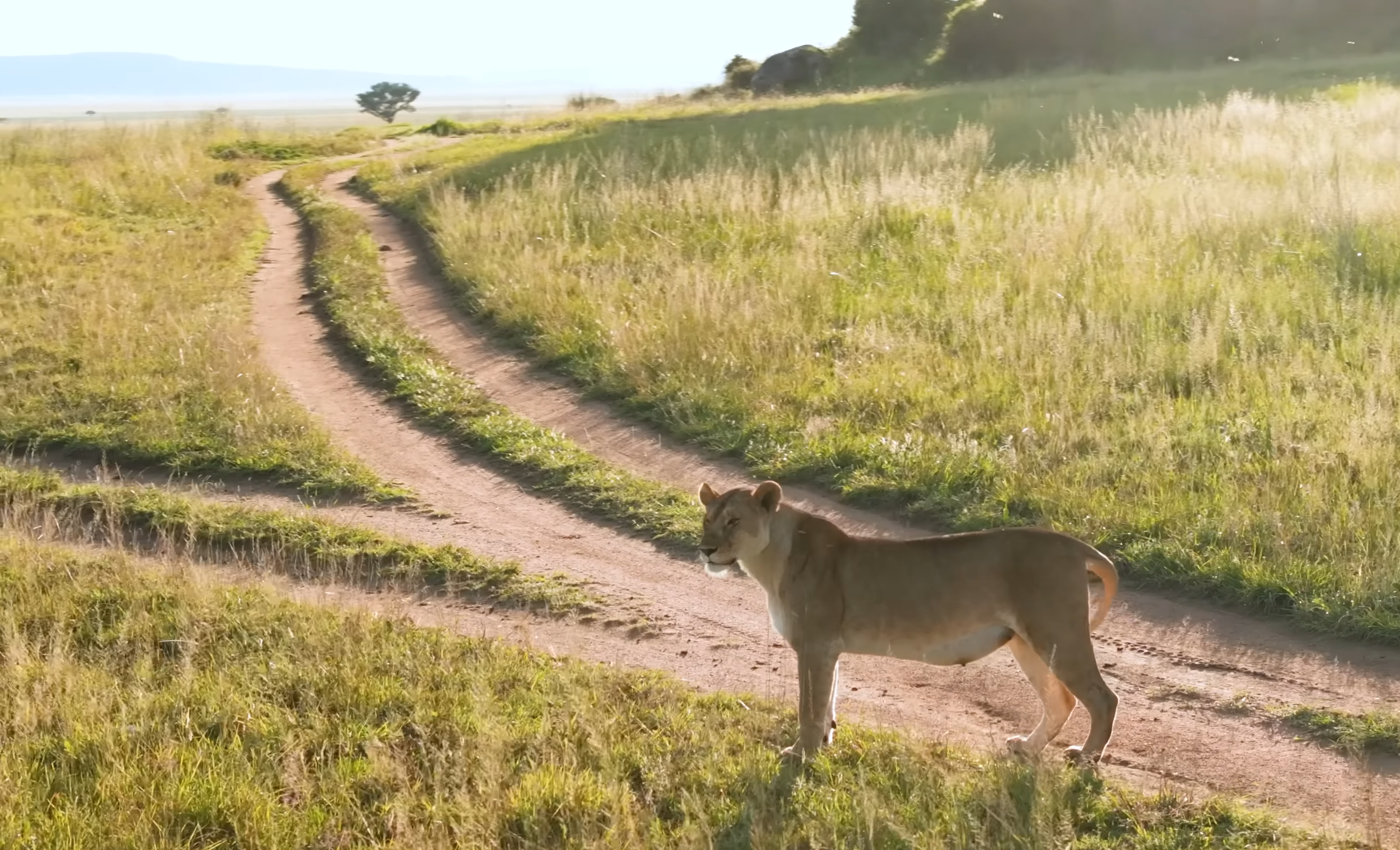
Lion Tracking|Uganda Big 5
In Uganda, lions can be found in three savannah parks: Murchison Falls Park, Queen Elizabeth Park, and Kidepo Valley National Park. While none of these parks can guarantee lion sightings on a typical game drive, visiting at least two of them significantly increases the likelihood of encountering these magnificent predators.
Murchison Falls National Park offers slightly better chances of spotting lions. With over 400 lion species calling Uganda home, these creatures attract numerous tourists eager for a glimpse. Interestingly, lions possess unique traits, such as their ability to walk only about 4 kilometers but run up to 60 kilometers, their social nature, and their roars that can be heard from up to 8 kilometers away. Additionally, they greet each other by rubbing cheeks and bid farewell by tugging on each other’s stomachs with their teeth. Witnessing African lions in their natural habitat is always an enriching experience for safari-goers.
Queen Elizabeth National Park is renowned for its tree-climbing lions, a rare phenomenon observed in only a few parks worldwide. Moreover, the park offers lion tracking activities, allowing tourists to join researchers in monitoring collared lions. Including lion tracking in your itinerary ensures a guaranteed lion sighting during your Ugandan safari.
African Leopards
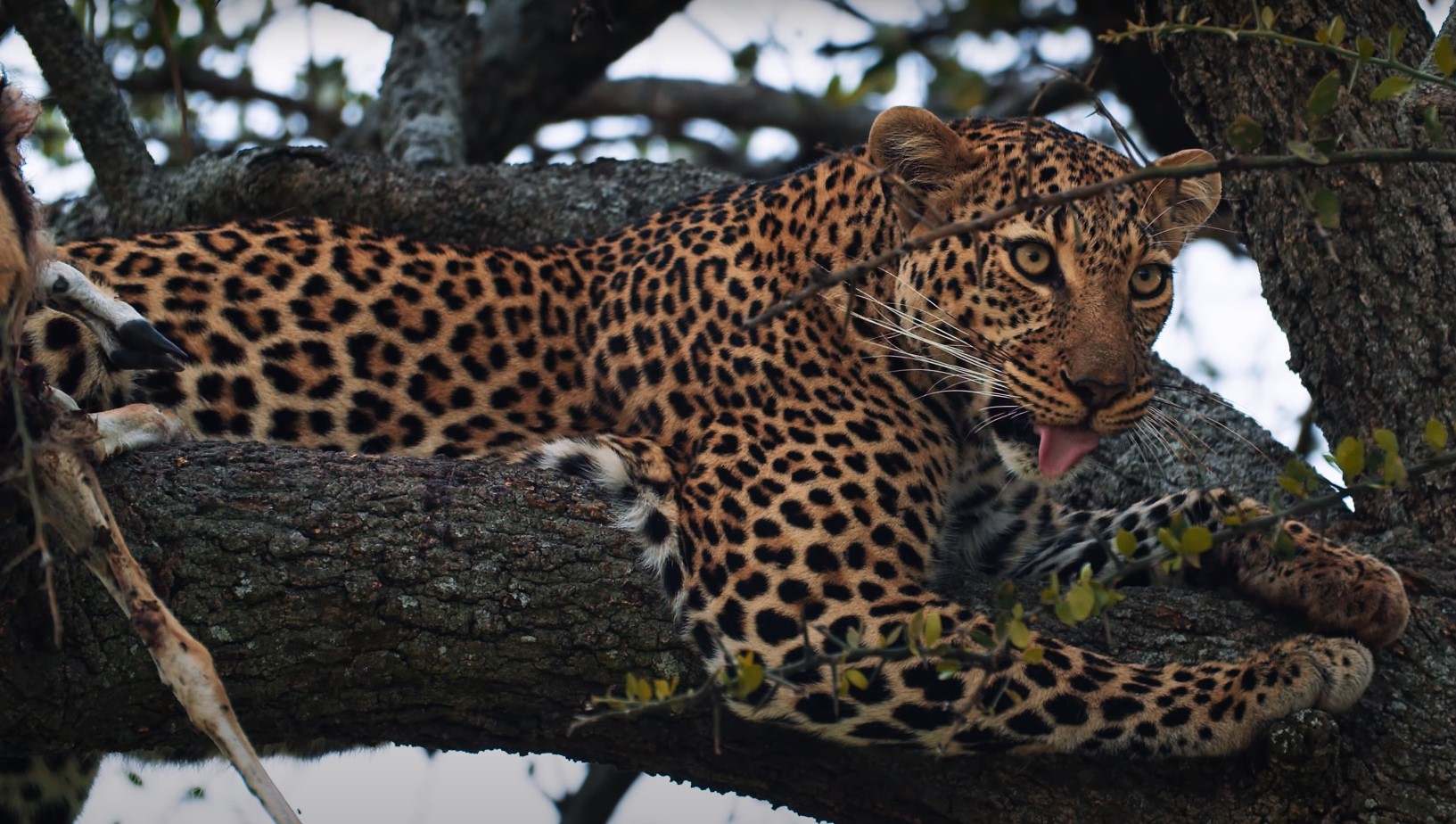
Kidepo Valley National Park|Uganda Big 5
Leopards, on the other hand, are elusive and challenging to find despite being the most widespread of the Big Five. Leopards spend most of their time wandering through the savannahs or forests. They usually hide in trees or caves. Leopards are solitary animals, and it is rare to see them in pairs. Unlike other carnivores, such as lions, leopards do not live in groups. The only time they are seen in pairs is during mating. Because they are solitary animals, they do not reproduce as much as animals that live in groups.
Leopards are fast and stealthy, and their spotted skin provides camouflage, helping them to hide and making them difficult to see. They are also nocturnal, so it is very rare to spot them during the day. Leopards avoid lions, which sometimes hunt and kill them. They also avoid hyenas, which can be a nuisance and steal their food.
Leopards are adaptable and can survive in different environments, such as rainforests, jungles, deserts, mountains, and savannahs. They are fast, agile, and can pounce on prey from trees. They are strong and can take down prey that is three times their size. They are also good swimmers and can hunt fish and other animals near water. If leopards live near human settlements, they may feed on livestock, such as goats and chickens.
Leopards in Uganda can be sighted in some parks, such as:
- Kidepo Valley National Park
- Murchison Falls National Park
- Queen Elizabeth National Park
- Lake Mburo National Park
- Semiliki National Park
Forest elephants
Forest elephants are undoubtedly one of the most magnificent and awe-inspiring animals you can spot on your Uganda safari trip. Uganda is home to both savannah and African forest elephants. Now, what distinguishes forest elephants from Savannah elephants? While the differences may be subtle, they are noticeable up close. Forest elephants have five toes on their front feet and four on their hind feet. Their grey skin is covered with a slight layer of hair, and their tusks are smaller, straighter, and point downward to help them move through the forest with ease.
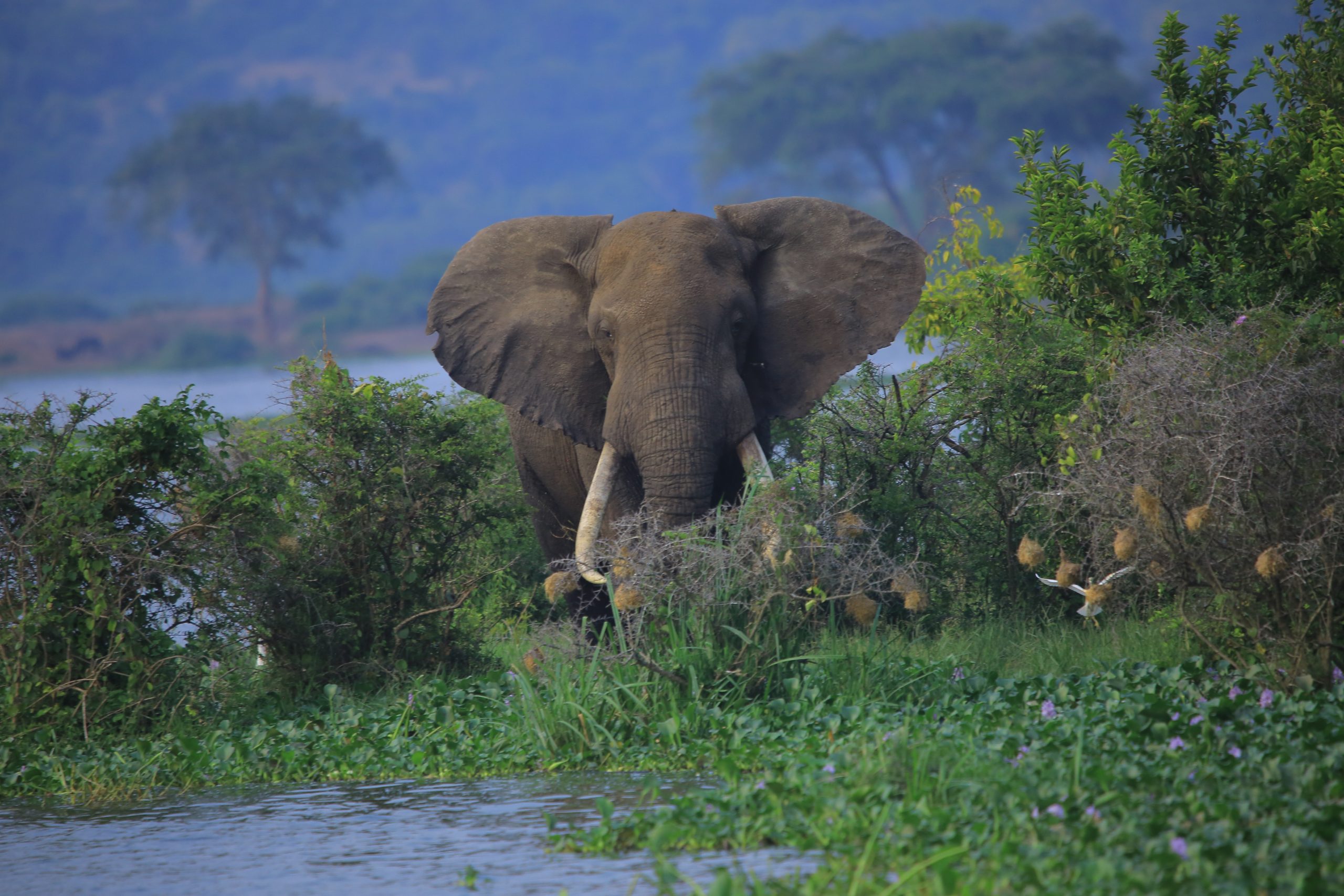
Elephant tracking|Queen Elizabeth National Park
Mostly found in the jungles of West and Central Africa, forest elephants can also be sighted in Uganda, having travelled through a corridor from the Democratic Republic of the Congo. Although smaller than Savannah elephants, they still weigh up to three tons and can grow to be 3 to 4 meters long.
Here are some remarkable facts about forest elephants:
-Feeding: They consume large amounts of grass, leaves, fruit, and other vegetation and can drink up to 15 liters of water in one go. They also dig in the soil to find mineral salts.
-Tusks: They possess high-quality tusks that are harder and more elastic than those of savannah elephants. Unfortunately, this makes them vulnerable to poaching. Forest elephants are heavily poached, particularly in the Democratic Republic of Congo.
-Sound and communication: They can communicate with each other over long distances, producing sounds too low for humans to hear. Their big, round ears can, however, pick them up.
-Forest habitation: They can cause significant destruction in the forests, digging up the ground, knocking down trees, and destroying underbushes. They are not very peaceful in their environment.
-Breeding: They can mate and breed at any time of the year, and the gestation period is 22 months. They usually give birth to a single calf.
-Threats and predators: Humans are their biggest threat, either as poachers or through habitat loss.
Forest elephants can be found in a few national parks and forests in Uganda, such as Bwindi Impenetrable Forest, Mgahinga Gorilla National Park, and Kibale National Park. If you’re up for gorilla or chimpanzee trekking, you might have the chance to spot one of these elusive creatures. An experienced guide with knowledge of the forests can lead you to their watering holes or grazing areas.
The African buffalo
The African buffalo, also known as the cape buffalo, is an imposing bovine and one of the big five animals. It is believed to be a cross between an ox and a cow. The buffalo boasts thick horns that protrude from each side of its head and is usually dark grey or black with lighter undersides that are often dirty from wallowing. Both male and female buffaloes have horns, with males having a horn shield around their forehead and being larger. They typically grow up to 3.4 meters long and 1 to 1.7 meters in height, weighing between 250-850 kilograms. Their lifespan is between 15 to 25 years.
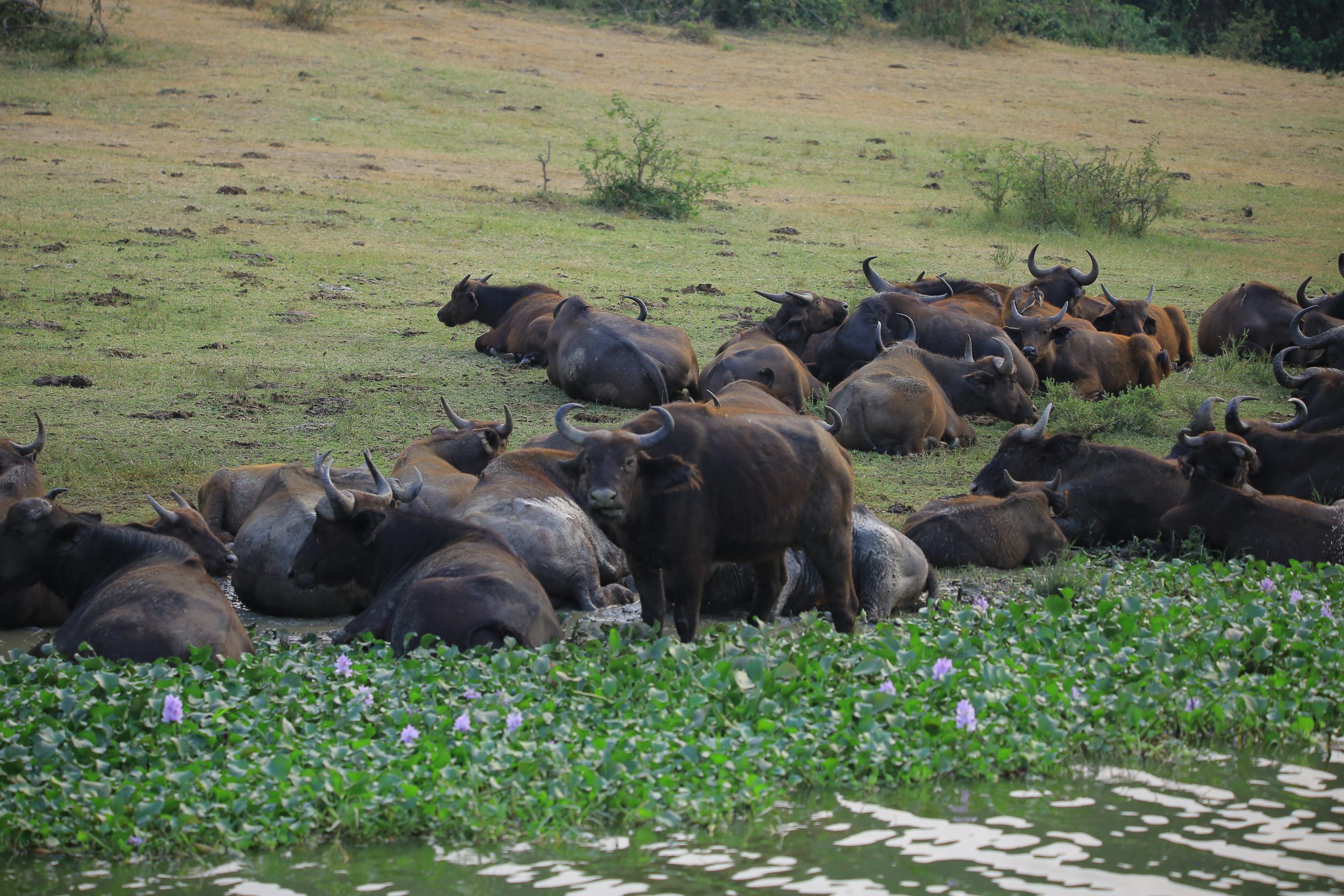
The African buffalo|Uganda Big 5|Queen Elizabeth National Park
If you want to see Cape Buffaloes on your Uganda safari, there are two types: the small forest buffaloes, which are common in Semliki National Park, and the large savannah buffaloes found in Murchison Falls National Park and Kidepo Valley. You can also spot them in Queen Elizabeth National Park and even in the beautiful Kidepo Valley National Park, where they may even find their way onto the verandah of your hotel. Don’t miss out on the chance to witness these magnificent creatures in their natural habitat!

